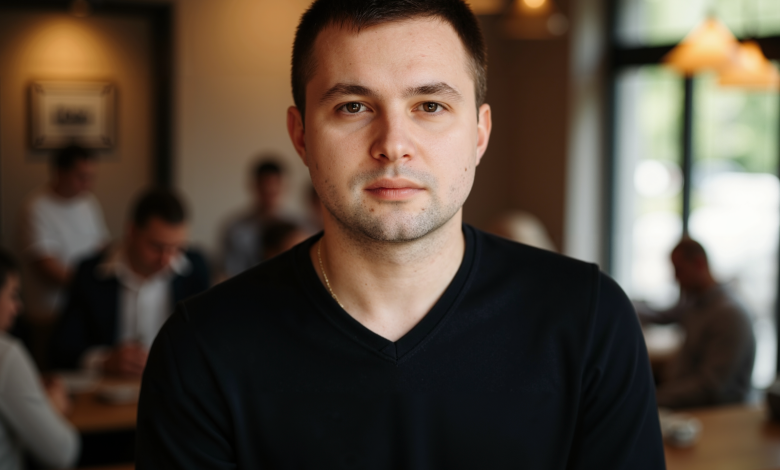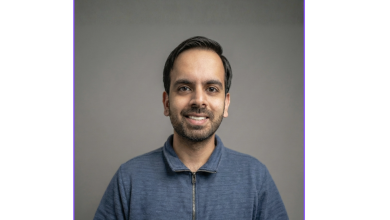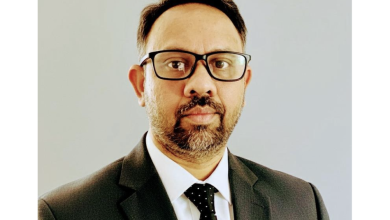
Today, mobile technologies define the pace of development across entire industries, and the banking sector is no exception. Financial services are becoming not just tools for business, but ecosystems where every detail affects the user experience and customer trust. In this environment, specialists stand out who can not only code, but also envision the architecture of the future.
One of them is Vitalii Sosin, Senior iOS Software Engineer at Raiffeisen Bank. His expertise lies at the forefront of mobile engineering: from modular application architecture and CI/CD to AI solution integration. Winner of the Myronyx Global Awards in the category “Excellence in Mobile Innovation for the Financial Sector” and judge of the international NextGen Hackathon, Vitalii today shapes not only digital products but also professional benchmarks for a new generation of developers.
Vitalii, you work on the Raiffeisen Business mobile app. What challenges did the team face when you joined the project, and what have you managed to change since then?
— When I joined the project, our task was to scale the application without losing stability. The architecture required modernization, as did the automation processes. We moved to a modular structure using Swift Package Manager, implemented a CI/CD system, and updated the visual components. One of the key achievements was the redesign of the interface and the shift to modern approaches in working with APIs. All this allowed us to reduce the time to market for new features and almost double the application’s performance.
You received international recognition, winning the Myronyx Global Awards. What does this award mean to you?
— For me, it is recognition not only of personal contribution but also of the level of our engineering school as a whole. The category “Excellence in Mobile Innovation for the Financial Sector” emphasizes that mobile solutions can be a driver for the development of financial business. We demonstrated that innovation is possible even in a large corporate structure if the team has ambition and technological courage.
You served as a judge at the NextGen Hackathon. What experience did it give you?
— Judging is an excellent way to see the industry from the outside. You understand where the new generation of developers is heading, which technologies they choose, which mistakes they repeat. This allows you to adjust your own approaches and share your experience. For me, it is important not just to evaluate, but to help the participants see the product architecture, think systemically, and not fragmentarily.
You often combine architectural thinking with a creative approach. For you, is innovation about technology or about mindset?
— I would say that innovation is primarily about mindset. Technology is just a tool. True innovation begins when you stop looking for ready-made solutions and start creating new patterns. It is this shift—from “how” to “why”—that turns an engineer into a leader, rather than just an executor.
Which project has been a personal challenge for you and why?
— Without a doubt, it was my own project, Random Pro. I built it from scratch both as an iOS and backend developer. This application became a laboratory for ideas, where I could test the boldest hypotheses. Creating a full-fledged server in Swift using Vapor, integrating AI, and implementing game functionality—all of this allowed me to hone my full-cycle development skills.
There is a perception that banking development is all about strict rules and minimal room for creativity. Do you agree?
— Partially. Banks do have strict regulations, security requirements, and code audits. But creativity is not about breaking the rules—it’s about finding the best solutions within those constraints. When you can optimize a complex system without breaking it, that is engineering art.
You often talk about technological leadership. What does this concept mean to you?
— For me, leadership is the ability to see further and share that vision. A leader is not someone who simply knows more, but someone who helps others grow. When I teach colleagues new architectural approaches or implement automation tools, I not only speed up processes but also foster a culture of development.
What do you consider the most important quality of a good engineer today?
— Curiosity. The world of technology changes every week. If you’re not interested in new tools, architectures, and approaches, you automatically lose relevance. A good engineer is someone who learns every day, experiments, and is not afraid to make mistakes.
How do you see the future of mobile development in fintech?
— We are moving toward an era of personalized banking ecosystems. An app will become not just a tool, but a digital partner that anticipates the needs of businesses. Artificial intelligence, adaptive interfaces, microservices—all of this is already shaping a new paradigm. And it is crucial now to lay the right architectural foundations, so that tomorrow we don’t have to rebuild everything from scratch.
Finally, what motivates you to stay at the forefront of the industry?
— I am inspired by the very idea of movement. I don’t like stability for the sake of stability. Every project, every new task, is a chance to go beyond previous experience. And if after completing a project you feel that you’ve become even a little bit better, it means you are moving in the right direction.




